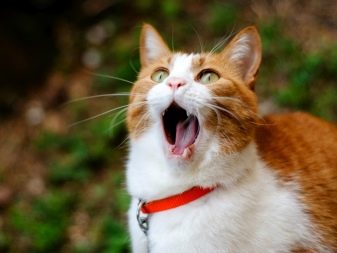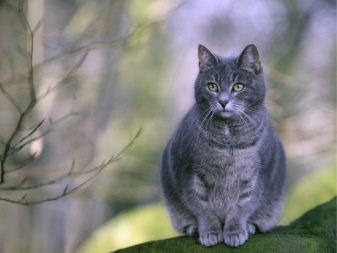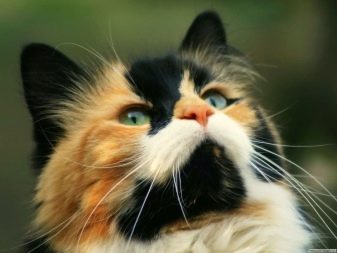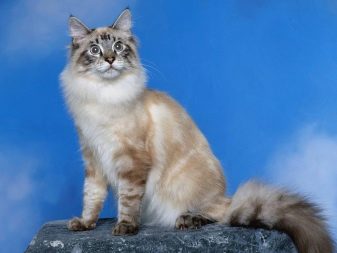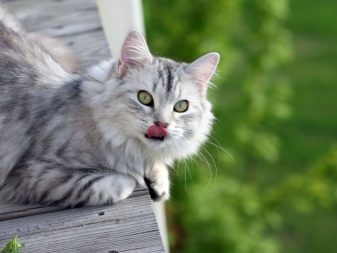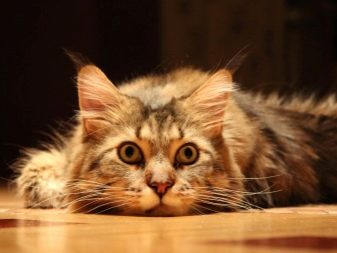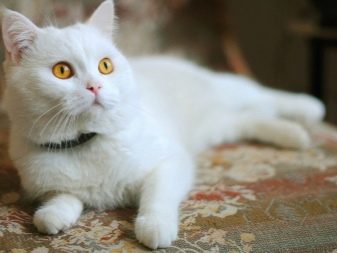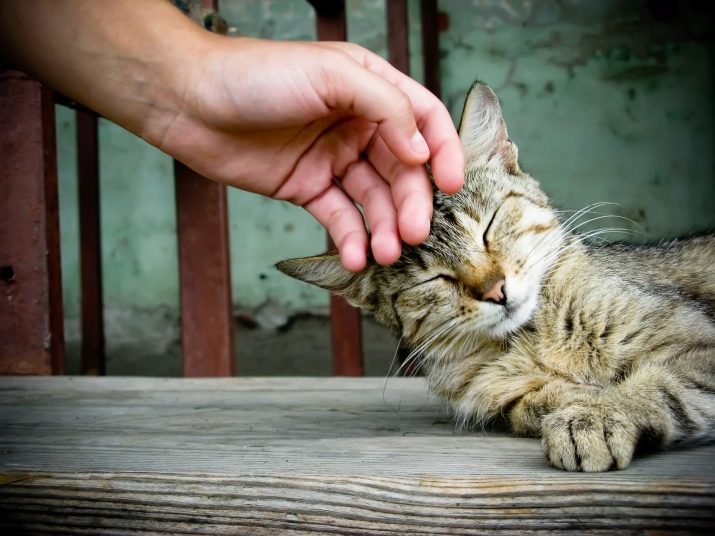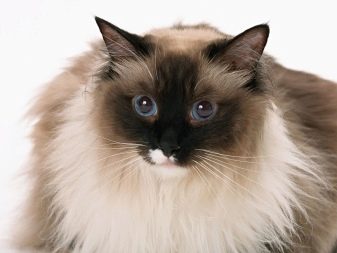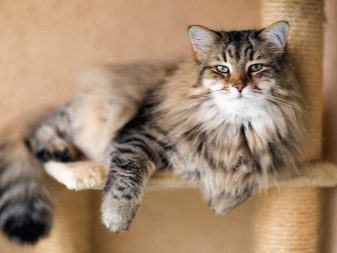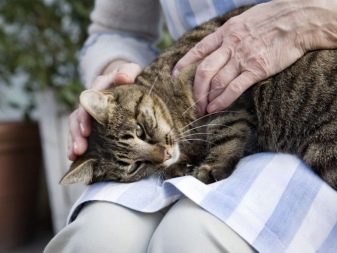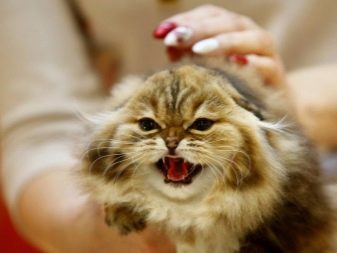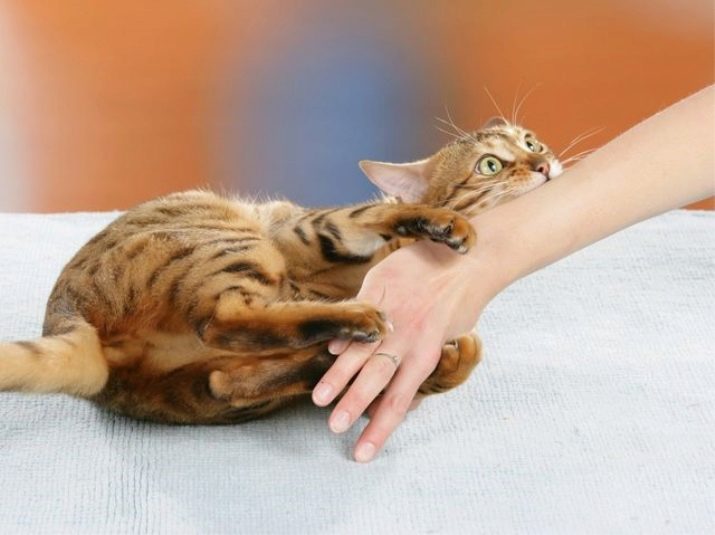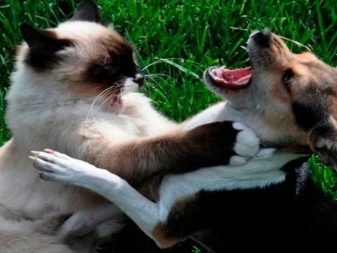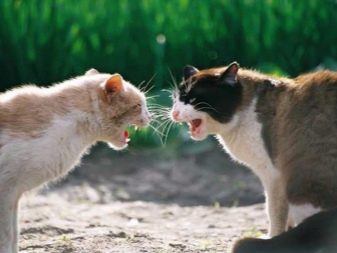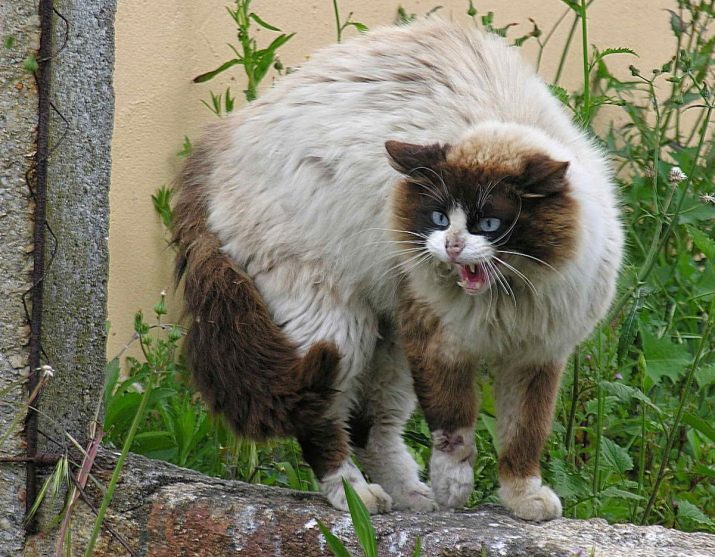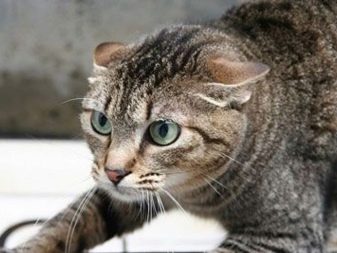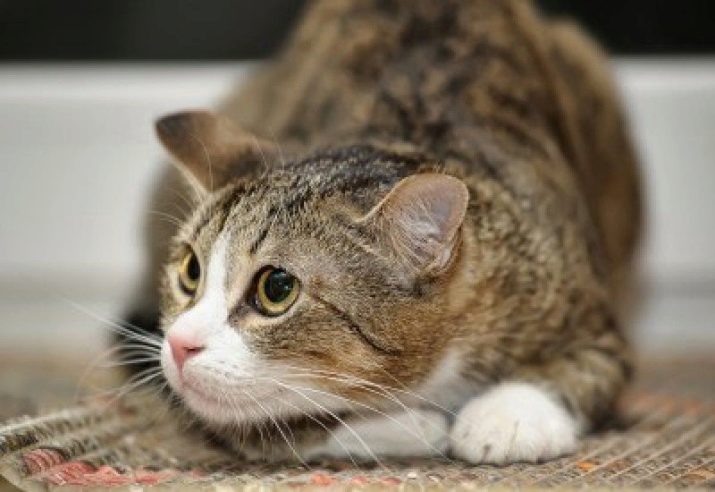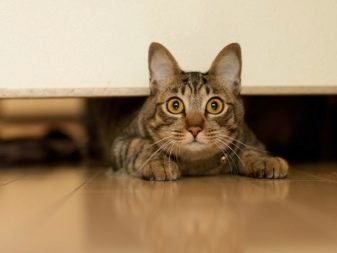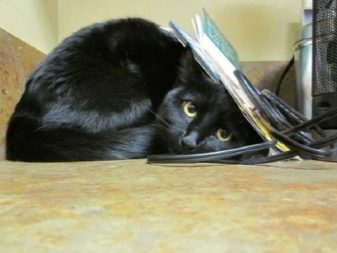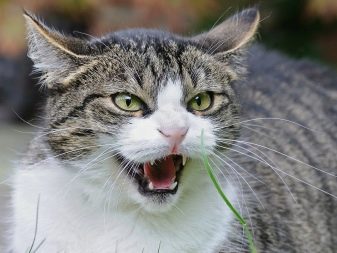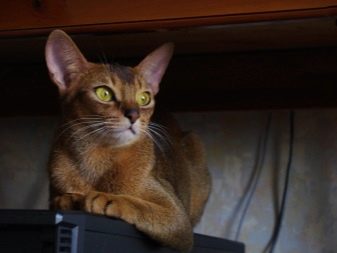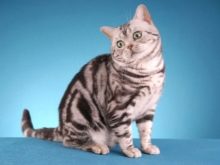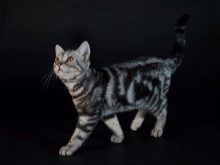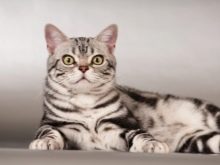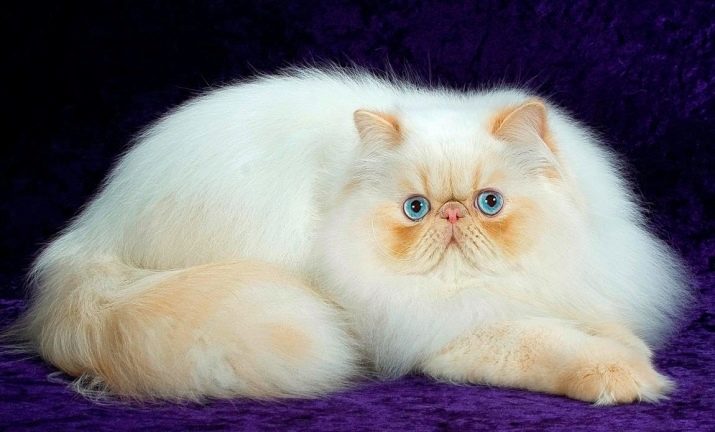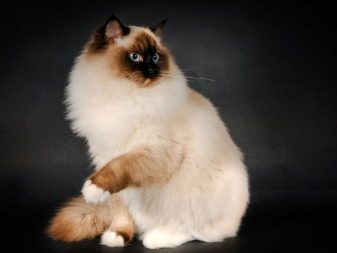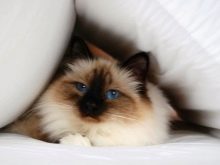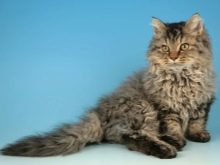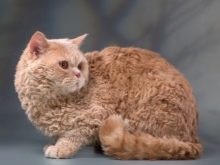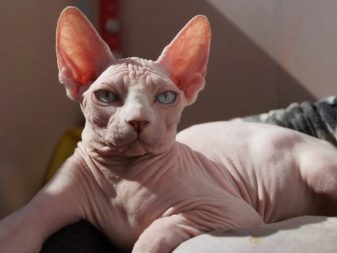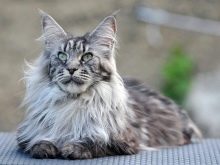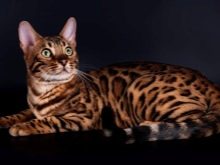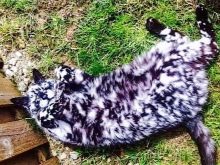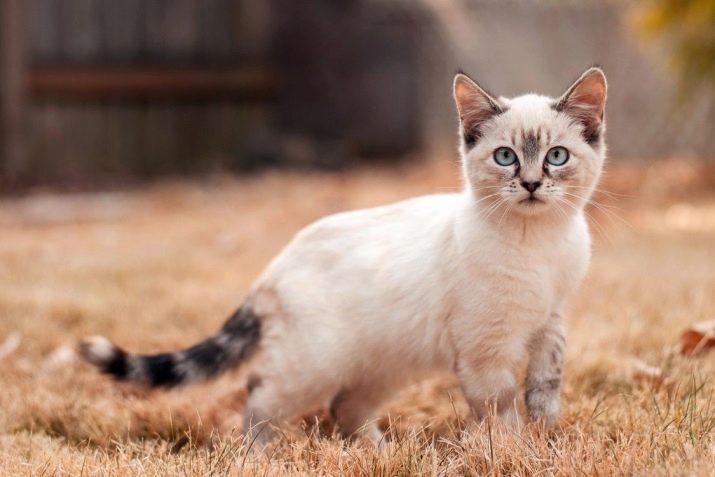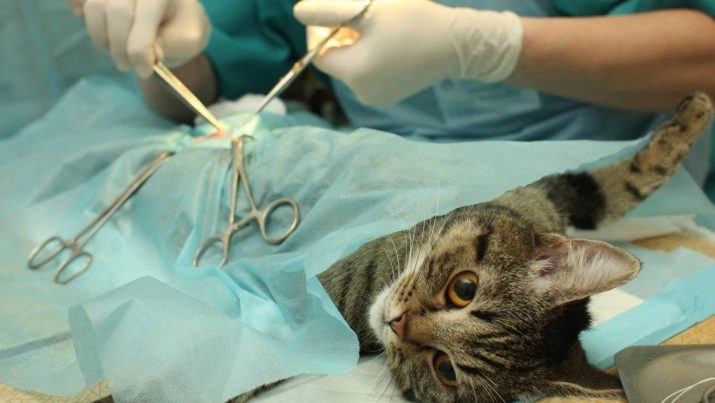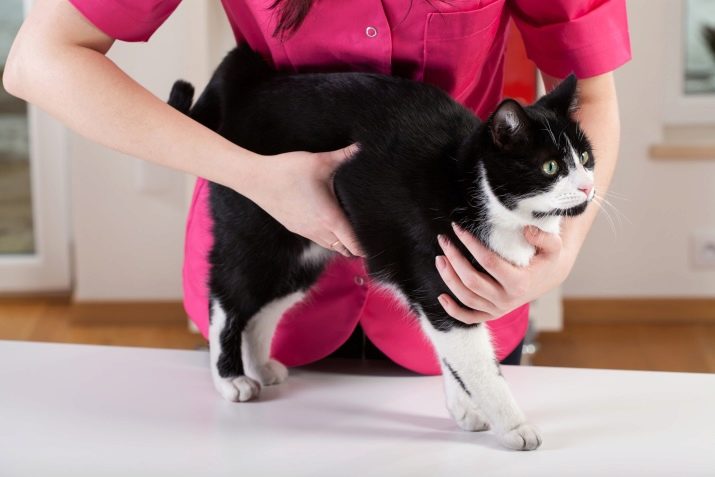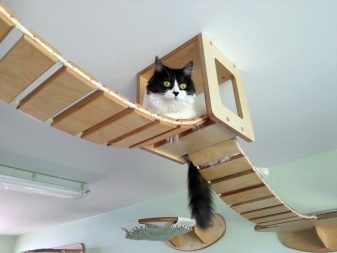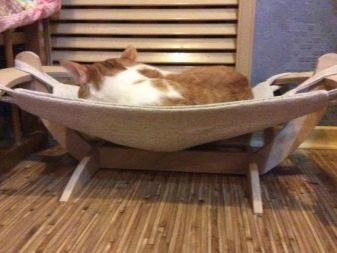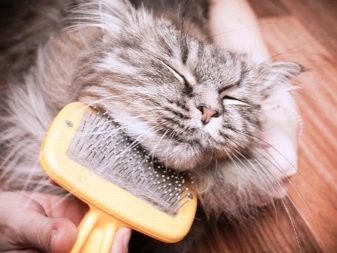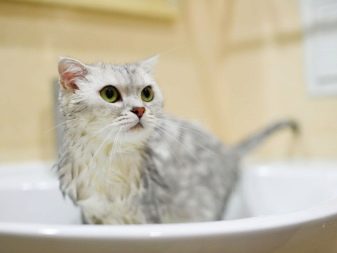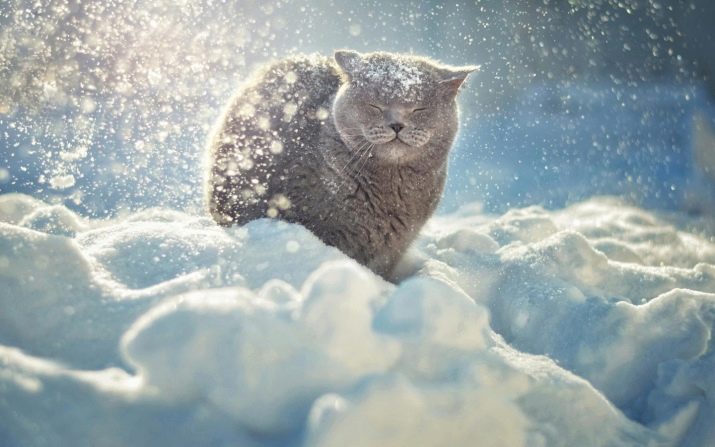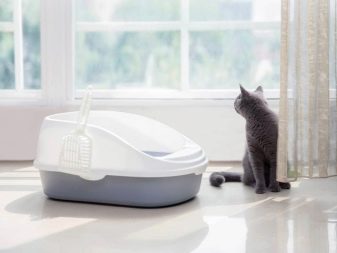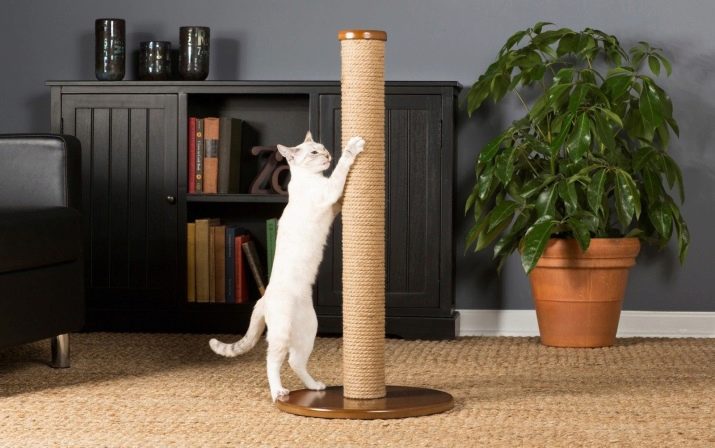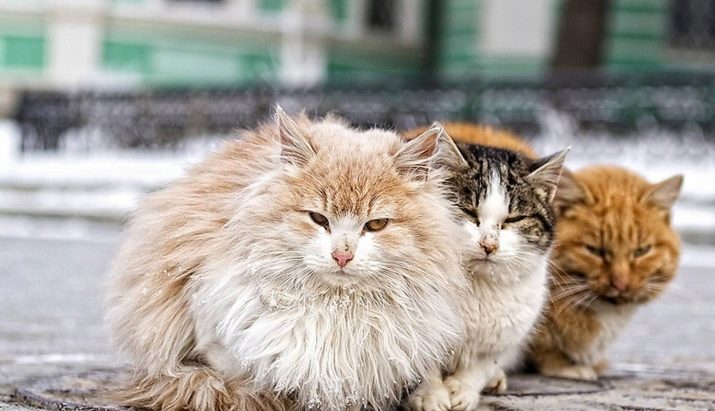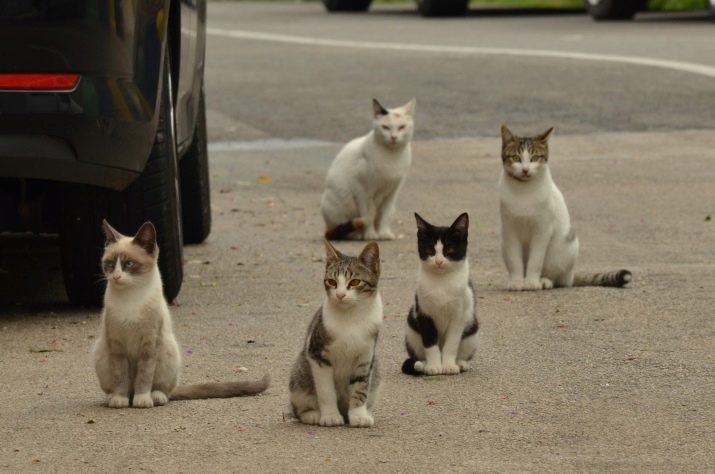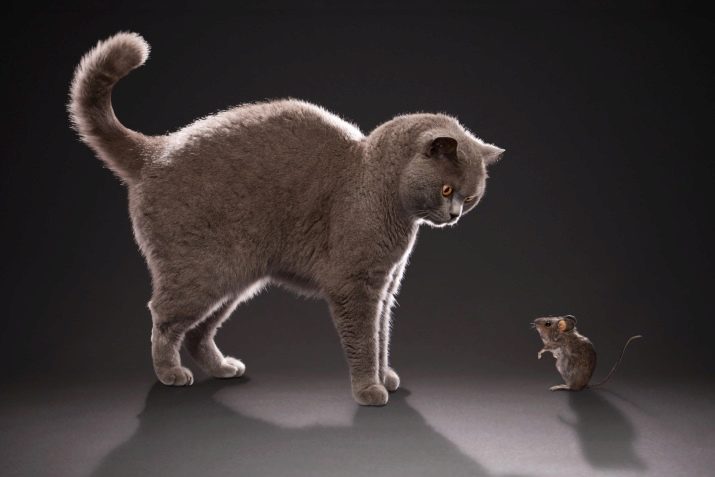Man has managed to fully or partially tame several dozen species of animals. But even among this mass, cats have a very special role. Because "tailed quadrupeds" deserve a separate discussion.
Description
The cat is considered to be one of the two most popular "companions" among animals. She can compete in this regard only with a dog, and it is not yet known who exactly will get the “podium”. If we proceed from the modern biological taxonomy, the cats are classified as representatives of the cat family, part of the group of predators. Before it was generally recognized as a separate biological species. But in-depth biological research has shown that it is a subspecies of forest cats.
In nature, forest dwellers prey on rodents and other small mammals. To coordinate hunting, not only sound signals are used, but also characteristic movements. In total there are at least 200 domestic cat breeds. They look very different, there are both long-haired and completely devoid of wool. Problems with determining the number of breeds are associated not only with the breeding of some and the disappearance of other species - different felinological organizations recognize a different composition of types.
For about 10 thousand years, cats have been used by people because they help to protect houses and property in them from rodents.
As a result of complex genetic analyzes, it was possible to establish that the distribution of this subspecies on the planet occurred in two stages. First, between 12 and 9 thousand years ago, the domestic cat settled the entire territory of the Middle East. The second spurt occurred after a few thousand years - then from Egypt the animals spread throughout Europe and settled also the north of Africa.
Despite the long-term domestication, the vast majority of cats, both females and males, effectively survive in the wild. Wildlife, when these animals are out of human control, happens very quickly and easily. Many of them settle alone, but biologists and small-sized colonies of feral animals are described. Because even experts can not fully understand whether cats are domesticated to the end.
Some of the scientists believe that what happened was not so much domestication, as the transition to coexistence.
But there are counterarguments. It is known that cats can be strongly attached to people. Sometimes they tend to playful behavior. Any kitten, not to mention an adult animal, is able to establish close emotional contact with the owner. And not only emotional. Many individuals lie on their knees with the owners or rub against a person's feet - it is well known.
Cats can swim. And they do it just fine (definitely better than most dogs). However, they do not like to dive. Compared with other members of the family, these animals are simply small. Because their thermoregulation is too bad, unlike the same lions, tigers, leopards, or even lynx.
Since the cat is almost always exclusively a loner, she can not use the “dog” exit - to warm up after going out to the land in the group.
Further, wet wool produces a strong unpleasant odor. And this negates the possibility of hunting from ambush.Yes, pets do not need hunting, but the blind will of an unconscious instinct is stronger. At home, it is required immediately after bathing to wipe the animals dry, so that they do not overcool and catch cold.
There are individuals of cats with green eyes, but blue-eyed specimens can look just as appealing. More importantly, regardless of the color of the eyes or coat, the behaviors are the same as those of the wild ancestors. Unlike humans, these animals found only 3 blood groups. The cat can be as long as 0.6 m (excluding the tail), and the tail itself varies on average from 0.25 to 0.35 m. Sexual dimorphism is characteristic of this subspecies, like for other animals.
Growth of a cat at the withers is on average 0.25-0.3 m. However, this figure is very conditional, and a lot depends on both the specific breed and the conditions of detention.
Most breeds weigh no more than 9 kg, Siberian and Maine Coons draw 11-13 kg; an even greater mass is already a sign of pathology. Anatomy of cats is consistent with the structure of the small predator. But compared to other mammals, this animal differs in an extraordinary skull, where there is:
- extra large eye sockets;
- strong jaws;
- roughly the same level of development of the facial and cerebral regions.
Such features of the structure significantly improve the quality of vision in healthy cats. Smell and hearing are also much better than humans. The field of view is 20 degrees wider, but the contrast and brightness of color perception is worse. But in the dark of night and in the twilight of the cat oriented perfectly. However, in absolute darkness, they will be completely helpless.
What are we for?
Talking about cats can not be limited, of course, a general description of their properties. It is also necessary to understand why these animals give birth at all. Judging by the opinions of people, many attach the most important importance to emotional relaxation. Having come home after a tiring day or faced with difficult household chores, it is very pleasant to meet with such an assistant. A feeling of calm and peace returns, negative thoughts and negative mood disappear.
For people who are single for one reason or another, a meal in the presence of a cat (just not at the table!) Will be much more pleasant than in solitude. If the owners have health problems, then four-legged pets will surely show care and attention.
Since ancient times, "tailed friends" are highly valued by people. Earlier, such a cat's ability as the ability to hunt rodents was discovered.
Even today, when it is easy to buy all sorts of poisons and traps, animal assistance is invaluable, and even more so it was important in the past, when there were no such sophisticated technical tools.
This ability helped the cat survive the darkest period of the Middle Ages, when the church took up arms against it. No fiercest criticism in sermons, no mention of the mythical connection of this animal to evil forces did not help. And the clergy had to admit defeat. Cats and cats are actively used to fight rodents not only in homes and barns, in granaries, but also in museums, libraries and other similar places. Finally, they simply look beautiful and aesthetically pleasing.
Character, intellect and behavior
Peculiarities of the psychology and activities of cats are no less important than their appearance or practical use. The knowledge of most people about this type of pet is quite superficial. Many will only say that cats often wash, curl up when cold weather approaches ... and almost everything is on it. Meanwhile, the real actions of the representatives of the cat, their real psyche are amazing and unusual. They are intertwined:
- fierce temper;
- tenderness to the owners;
- composure in one and passion in other circumstances;
- cunning;
- advanced intelligence.
Inexperienced people, having started a cat, often become stumped.They are amazed at the apparent inconsistency and lack of full-fledged logic.
But in fact, everything is much simpler when you consider a few simple facts.
First of all, the four-fingered are predators. The whole world for them is divided into potential victims and potential competitors. Sudden aggressiveness is therefore explained very simply: a small animal cannot eat a human, but tries to drive it away to avoid possible harm.
Predatory status determines another characteristic feature - strict protection of “its own” territory. At the same time, the quantity of food available and its stability play no role. Protection of personal space is expressed in non-acceptance:
- relocations;
- change or rearrangement of furniture;
- attempts to remove the animal, at least temporarily, from the place he had chosen.
There is only one way out for the owners - to behave so that their pets do not suspect an invasion of their own territory. When they pass by calmly by the side, the quadrupeds themselves also react to it calmly. And one more nuance: since the cat always acts alone, she does not count on anyone's help. She has to be constantly on guard and prepare to repel attacks.
If there is any other animal in the house (especially when there are many of them), the baleen will continuously try to draw the maximum of food and attention from the person to themselves.
When a cat suddenly and without apparent reason behaves restlessly, it means that once in the same situation she experienced a negative experience. At the same time, all the incidents, even those that were in early childhood, are deposited in her memory. Of considerable importance is the heredity of animals. This circumstance is easy to notice by comparing the actions of cats of various breeds. Those who do not belong to any breed, usually distinguished by waywardness and emphasized independence, have little respect for the person.
Along with instincts, cats also have behavioral patterns developed during their lifetime. Those of them who initially dominated, in the future just will not play a subordinate role. For the sake of their status, they are ready to fight ruthlessly with other cats, and even with dogs.
Important: A large part of the strange behavior is due to elementary deficiencies in education.
The usual consistency and integrity, scrupulous attention to detail solves most of the possible problems. To make a sociopathic cat, you need to decide for yourself. On the one hand, such pets do not make contact well, even with the owners. On the other - they require less attention. Feral cats rarely approach the call of the people. Many of them avoid communicating with a person even for the sake of getting food from him - usually this is typical of animals that are systematically hurt and poisoned.
Any pet owner should know what a form of behavior means. The arching of the back, accompanied by the raising of the wool, expresses a sense of danger. This is a gesture addressed to a potential enemy, so that he, too, is afraid. The hosts at such moments should stay away, waiting for the feeling of anxiety to pass. But if the back arches immediately after sleep, and this is accompanied by a squeezing paw, then this is just a warm-up.
Many experienced people will say and ears. When they stand straight and open, the pet is in a neutral mood and will ignore everything that people do.
But pressing the ears in the head means anger. Of course, this is not a signal to the enemy, but simply a defensive reaction to reduce the risk of injury. The main thing you need to do when you see pressed ears is caution - when aggression is not provoked, the risk of “falling under the claws” is minimal.
Turning the ears back, the cats seem to notify that they are ready to play and show interest in something. Much will say attentive people and posture, which takes the animal. Lying on his back, he thereby shows absolute confidence in the owners.But in relation to dangerous animals it is rather a “preparation for battle”. When such a pose is taken suddenly and for no apparent reason, it is most likely a matter of a subconscious attempt to train hunting skills.
Periodic back riding means the desire to have fun, to make your life more comfortable.
But if this happens systematically, this indicates continued stress and attempts to calm down. When a pet sits for a long time and looks at the owner, he thus usually asks for something:
- open (close) the door;
- open (close) the window;
- to feed;
- walk and so on.
But in some cases, persistent observation of the owner shows that the cat sees a certain threat. It is worthwhile for some time to move to another room and decide what provokes such a reaction.
But the rubbing of the head against the leg expresses quite special feelings, affection towards the person.
Crawling cats because they are ordered by the hunting instinct, forcing something to track, to hide from someone. Climbing in a belligerent way can also be associated with a sense of some danger or with excessively noisy behavior of the hosts. Strong fear is expressed in hiding the tail between the legs. In such situations, the most important thing is to quickly understand what caused the stress and how to defeat it. If the animal, pressing the tail, simultaneously trembles and refuses to get up, then this is an acute attack of diabetes. The only way to save a cat is to go to the vet immediately.
When the tail is systematically moving from side to side, it cannot be assumed that the pet is in a benign position.
Exactly the opposite - this is about the same, in fact, the physiological reaction, as the desire of some agitated people to knock with their fingers. You can be sure that at any moment there will be a hiss, or even a silent, swift attack will occur.
Raised straight up, like a pipe, a tail, means a positive mood. Not without reason such an action even entered folklore as a vivid image. It is not necessary to grab the beast in your arms at this moment. Much less likely to spoil his good mood will be if the owners will enter into a gambling game or give some delicacy.
But when a cat or a cat hiss, it is a signal that prohibits approaching them. Hiss is associated with both anxiety and fear.
The most correct strategy is a quiet departure to the side and close observation (with the appropriate conclusions about their behavior and other points, of course).
Angry, the cat sometimes snorts. The correct reaction is the same - do not disturb the animal, wait until it becomes calmer. But sniffing is also caused by the inhalation of dust. Any special reaction, if the animal copes with the problem itself, is not required. Severe discomfort, sometimes accompanying snorting, manifests itself in rubbing the nose with paws - and noticing this, you should immediately go to the clinic.
A common mistake is the perception of purring as a uniquely positive reaction. Of course, such a sound can often be heard by petting a pet, or by feeding it tasty. However, sometimes the purr is heard because of the feeling of hunger or even expresses fear. Therefore, when it begins suddenly and against the background of complete well-being (especially during play or affection), you need to step aside.
Otherwise, hydrogen peroxide may be necessary in a few minutes.
It is necessary to pay attention to the meowing timbre. When it is loud and prolonged, closer to a war, this is another signal of excitement or rage. At any second, you can expect characteristic reactions - aggression or panic flight. True pleasant meowing always consists of short sounds, like cooing in pigeons. At such a moment, the owners can be completely calm and not expect any dirty trick from the animal (subject to different rules of communication, of course).
Popular breeds
There is a huge number of different breeds of cats. And even the most devoted amateurs are unlikely to be able to make at least 30% of all types of their “career” in order to get acquainted with them closely. That is why it is so important to know which species are better than others, according to experienced breeders. One of the undisputed leaders among the tails is the Abyssinian breed. Like its country of origin, it is very ancient.
This group is peculiar to the special, by the standards of the cat, intelligence and the same obstinacy.
"Ethiopians" are considered very beautiful animals, because their colors are really unusual. Photos can not convey all the charm, all the charm of these individuals. But in terms of independence it is difficult to find an alternative to the British Shorthair breed. Despite the attachment to the owners, they can be safely left for 2-3 days in the house. When the owners return, their pet will not be endlessly frightened or shocked by such a long separation.
For many people, however, it turns out to be much more preferable. american shorthair breed. She is sociable, but very independent. It’s natural to be near the owner for such animals, but they rarely allow themselves to be picked up or even simply stroked. Like the “British”, they calmly transfer the work of the owners in shifts or short trips, but they will definitely have to buy a lot of toys.
If you need a pet that can boast a fluffy tail, a very good choice can be Persian breed. Its representatives are very large (sometimes weighing up to 7 kg). The paws are relatively short, but the chest is impressive in its powerful development. Important: Persians are brachycephalic, and the rules of a number of airlines prohibit transporting them.
It is required to specify this nuance before each flight in order to eliminate problems.
Lovers of gentle and calm animals should pay attention to the Ragdoll breed. It differs in that when it is in the hands of the owners it is 100% relaxed, as if it goes limp. Of the other properties of the breed should indicate:
- sociability without excessive annoyance;
- quiet, iridescent voice;
- gullibility and loyalty;
- calm and developed intelligence;
- ability to find contact with children.
But it should be borne in mind that Ragdolls sometimes suffer from the carelessness of playing with them, especially children. Just because of the very high pain threshold in these cats. But the Burmese breed is somewhat different - for her own dignity comes first.
Such an animal, no doubt, will decorate any home. At the same time, it is not very active and will not penetrate where it is not being asked for.
Burmese:
- sociable;
- differ in curious temper;
- behave unobtrusively;
- claws are released only as a last resort, when passive removal does not help;
- require active grooming;
- unable to land on 4 legs, therefore it is unacceptable to let them on the cabinets or to open windows.
Due to the friendliness, the Selkirk Rex breed is in demand. It is peculiar adoration of games and other manifestations of attention from the person. Such a cat may persistently accompany people, while not bothering them too much with their presence. Characterized by a calm perception of children and patience to pranks on their part.
But it is important to bear in mind that such a pet needs complex care.
But Akrinsk cat is considered one of the rarest species. She belongs to the semi-longhair group. There is no other information about it. If you go back to the number of the most popular species of felines, then you should definitely note:
- Maine Coon;
- Bengal cats;
- Canadian Sphynx;
- Siberian and Neva masquerade animals.
Interesting colors
Nature has stocked up a lot of interesting things, and the colors of cats are just included in this “interesting”, undoubtedly. Here, for example, how the “little black hat” looks on a completely white animal. And here it is clear that the look of the pet becomes more interesting when the “fox” is painted on the tail. However, the black top of the head against the background of a gray body as a whole, in combination with the black tail, will look no less brilliant. And there are such exotic options as:
- different colors of paws;
- a combination of black and light yellow on the head;
- black hearts on a white background;
- look like a panda.
How to choose a kitten?
It is usually recommended, regardless of color, to pick up small animals. They become more attached to their owners and show themselves more emotionally. You can take an aged cat only if you have enough experience and free time. Be sure to take into account such nuances as:
- complexity of care (the longer the coat, the more work the owner will have);
- nutritional requirements (pedigree, especially intended for exhibitions, specimens need more sophisticated than usual food);
- characteristics of a particular breed (sociability, calmness or aggressiveness, degree of attachment to the owner, suitability for children);
- availability of necessary vaccinations and veterinary certificates;
- pedigree.
The selection of cubs from nurseries should begin with an assessment of the reputation of the institution itself. It will tell a lot about the professionalism of the people working there and about the perfect approach.
But to take the cats from the shelter should be with great caution. No, they are not much inferior to the "average" in quality specimens. However, many pets have attitudes towards people (and not without reason) are flawed, and individuals with poor quality training or poor health are often found.
Acquiring cats younger than 2 months is frankly unwise:
- they are too weak;
- excessive need for help of adult animals;
- basic life skills are not yet sufficiently developed.
Sex selection
This moment also cannot be underestimated. When the breed is selected and there is a short answer to other questions, it comes time to deal with the pros and cons of both options. Girls, no matter how attached they are to people, tend to "walk by themselves." Only in especially difficult situations for themselves do they get into the hands of their owners. In the everyday setting of the cat, they can only pat and scratch themselves.
Boys are affectionate, and their affection is more crowded. They express feelings much more clearly and openly. Differences in content occur as soon as the animal reaches full biological maturity. Quite often, adults are castrated. It leads to a dramatic change in character.
Important: sterilization and castration should not be confused.
In the first case, instead of complete surgical removal of certain organs, a full hormonal background is maintained, but in fact the appearance of offspring will be impossible. Therefore, sterilized animals retain the same behavior. The negative side of both procedures are:
- the likelihood of complications (albeit low, but in fact unavoidable);
- the presence of intolerance to some painkillers and other necessary drugs;
- recovery after surgery;
- the need (in the case of castration) to switch to a special food or strictly limit caloric intake.
Conditions of detention
One of the mandatory requirements for keeping a cat or a cat at home is to satisfy their curiosity. Therefore, along with the allocation of a permanent place to live, you will have to take care of hanging a hammock on the windowsill. Otherwise, the animals themselves will voluntarily climb on the same window sill. How it may end, not so difficult to guess. Making a cat lounger with your own hands is not particularly difficult.
Good preforms for it are PVC pipes. Cutting and joining them so that a stable quadrilateral is obtained, it is necessary to stretch and fix the fabric inside it.
Usually, the made structure is equipped with suction cups, which will allow to hang it on the radiator or on the wall in the apartment.
For information - another version of the hammock on the battery is made from the following materials:
- wooden trays;
- small pillows;
- ropes;
- hooks on suckers;
- large hooks for loops.
Some people prefer to buy ready-made hammocks.
Round products perfectly reproduce the sleeping pet's geometry.
However, rectangular and square structures are more common. The skeleton of the lounger for the “weighty” beast must be made of metal. The devices suspended on radiators of heating have frameworks from a steel pipe.
But confine one hammock, even the best, you can not. Have to:
- comb out systematically animal fur;
- from time to time (at least 1 time in 60 days) bathe and wash them in warm water;
- resort to extraordinary bathing, when the wool is heavily polluted.
Proper care
Talk about caring for cats should not do without indicating the specifics of their content in the winter. In the cold season, the activity of pets is reduced. Instead of games, they prefer to sleep in warm corners. But if all this, and even the look of a coiled cat, is quite pleasant, then changing the diet is much worse. The owners will have to look for the optimal position, separating the natural desires and the requirements of maintaining health.
In the autumn months, cats shed, in cold weather to flaunt beautiful wool and thick undercoat.
However, when the content in housing this annual cycle is broken. Therefore, it is necessary to systematically comb a fur coat, use special vitamin preparations. It is strictly impossible to prevent hypothermia pets, which leads to many diseases and a general decline in immunity. Leaving a cat or a cat on the balcony, you can be afraid of frostbite.
Feeding
Nutrition is an integral part of systemic care. There are a number of simple rules:
- small pets are fed strictly warm food, not hot or cold;
- transfer to an adult diet occurs in 4 months;
- for a full supply of vitamins should be in the diet and vegetables;
- whenever possible it is worth using ready mixes;
- ordinary human food, especially fat and flour, does not fit perfectly;
- You can not use any smoked meats.
Education and training
The construction of the educational process of the cat should be based on the use of strictly conditioned reflexes. The pressure on the unconditioned reflexes threatens a lot of serious problems. From the very beginning you will have to teach the animal:
- to use trays;
- for eating in strictly defined places;
- to the inadmissibility of scratching furniture, tearing clothes.
If possible, use positive motives - part of the cats for life remembers any offense caused.
The best way to encourage them to do anything is to use food stimuli. To stop unwanted actions, noise signals should be used.
Since cats are naturally tuned to hunting in silence, loud noises immediately knock them down.
A good alternative is spraying a naughty or too aggressive cat from a spray bottle with clean cold water. Water mixed with honey or lemon juice helps even better. Then concern about the cleanliness of the coat instantly pushes into the background all unwanted motives. When the skill of using the latrine is learned, it is necessary to accustom the pet to specific places of rest, to the human mode of the day, and to the use of scratching posts.
Lifespan
When planting and teaching a cat, many people wonder how long it will live. Given current advances in veterinary medicine, if proper care is provided, the pet’s lifespan can be 15 years.There are a number of cases when it exceeded even 20 years. But this applies to pets.
Homeless (both in cities and outside settlements) live much less.
7 years is almost the limit for them.
It is customary to divide the cat's life into such conditional periods:
- children (up to 10 months);
- youth (10-24 months);
- mature age (3-6 years);
- elderly period (7-10 years);
- old age (from about 11 years).
Interesting facts about cats
The longest-lived cat, according to some, lived for about 38 years. And throughout life, as long as physical health permits, these animals hunt. On the hunt, they go out even when they feel saturation - so tells instinct.
It is important: if the whiskers break, then in most cases the situation is quite normal.
But if such an event occurs too often:
- humidify the air;
- switch to better shampoos;
- make bathing less often;
- Provide pet water without restrictions.
Returning to the hunting activities of four-legged, it should be noted that because of them, these animals are prone to myopia. Far objects for them are much more valuable and more important than being close. And when the prey is caught, and eating begins, the taste almost does not matter.
Actually, in cats, taste buds are less developed than in humans. Sweet taste, they are completely unable to feel.
The conspicuous part of the four-fingered, living in England and Scotland, has extra fingers. Zoologists suggest that this is the result of a mutation that has arisen in animals that have been on ships for a long time. Another interesting fact about cats is that 2/3 of their lives pass in a dream. But in reality, cats are able to produce 10 times more different sounds than dogs.
About domestic cats, see below.


